Abstract
Indirect blood pressures recorded with a random zero sphygmomanometer were compared with simultaneous intra-arterial blood pressures recorded with the Oxford system. Twenty five patients undertook a graded bicycle exercise test, cycling at workloads increasing from 41, 65, 114, and 163 W (250 to 400, 700, and 1000 kpm per min) with each grade being maintained for three minutes unless the exercise test was terminated earlier at the point of fatigue. Intra-arterial pressures were recorded continuously and indirect measurements made at steady state levels in the 30 seconds before each change in grade and immediately after the termination of the exercise protocol. The mean difference in systolic blood pressure at 5.5 minutes of exercise showed that the indirect measurement underestimated the direct measurement. Immediately after the termination of exercise the blood pressure fell precipitiously to a highly significant degree. For both systolic and diastolic pressures there was considerably individual variability. These data confirm that indirect methods of blood pressure measurement during dynamic exercise testing are inaccurate and may provide misleading information.
Full text
PDF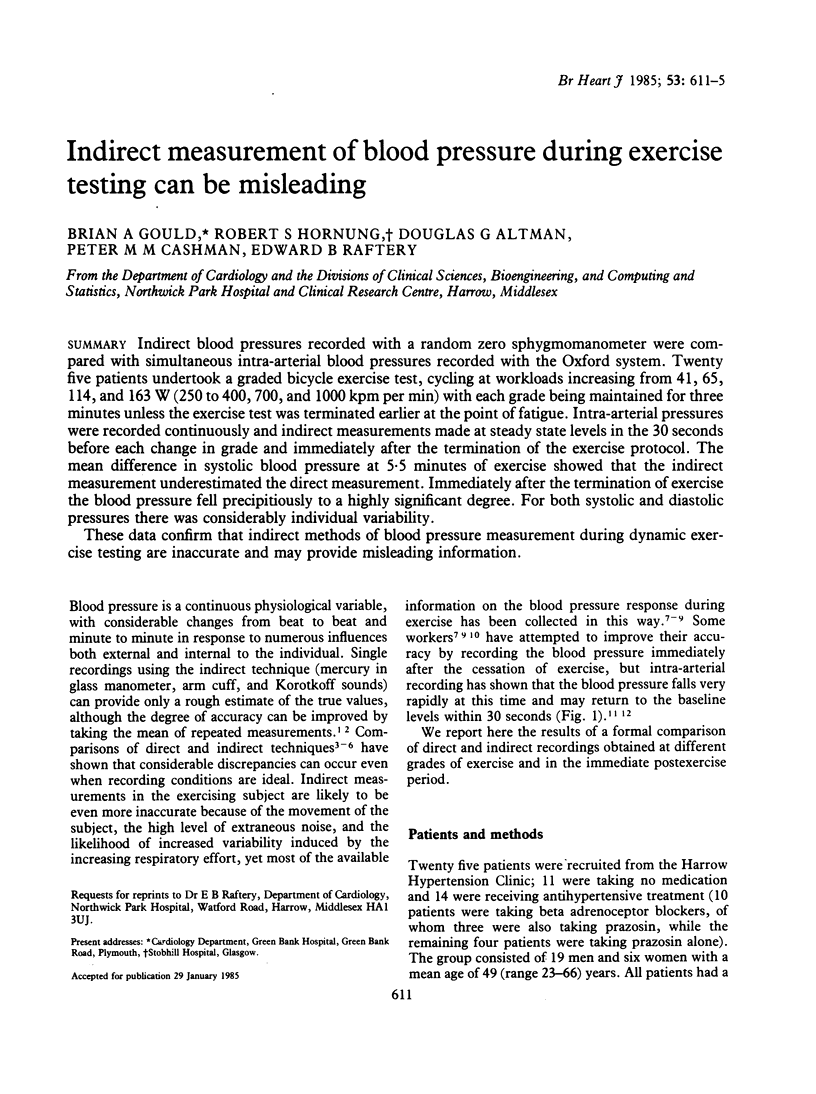
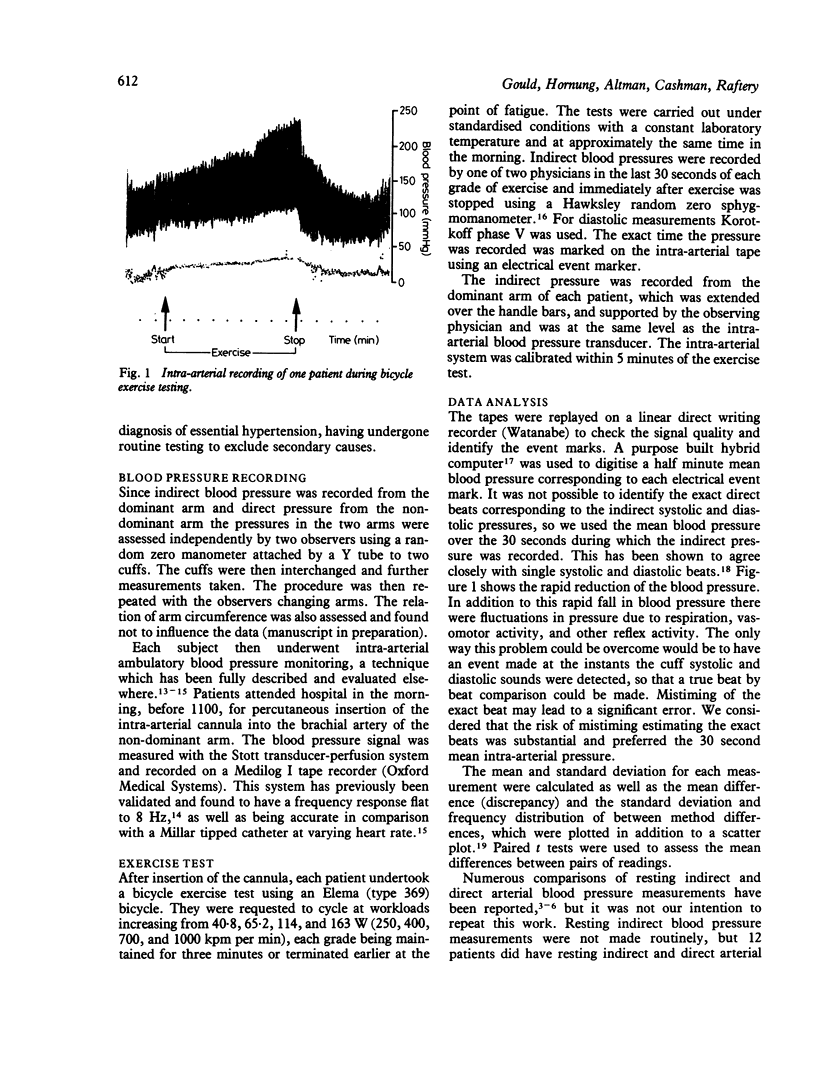
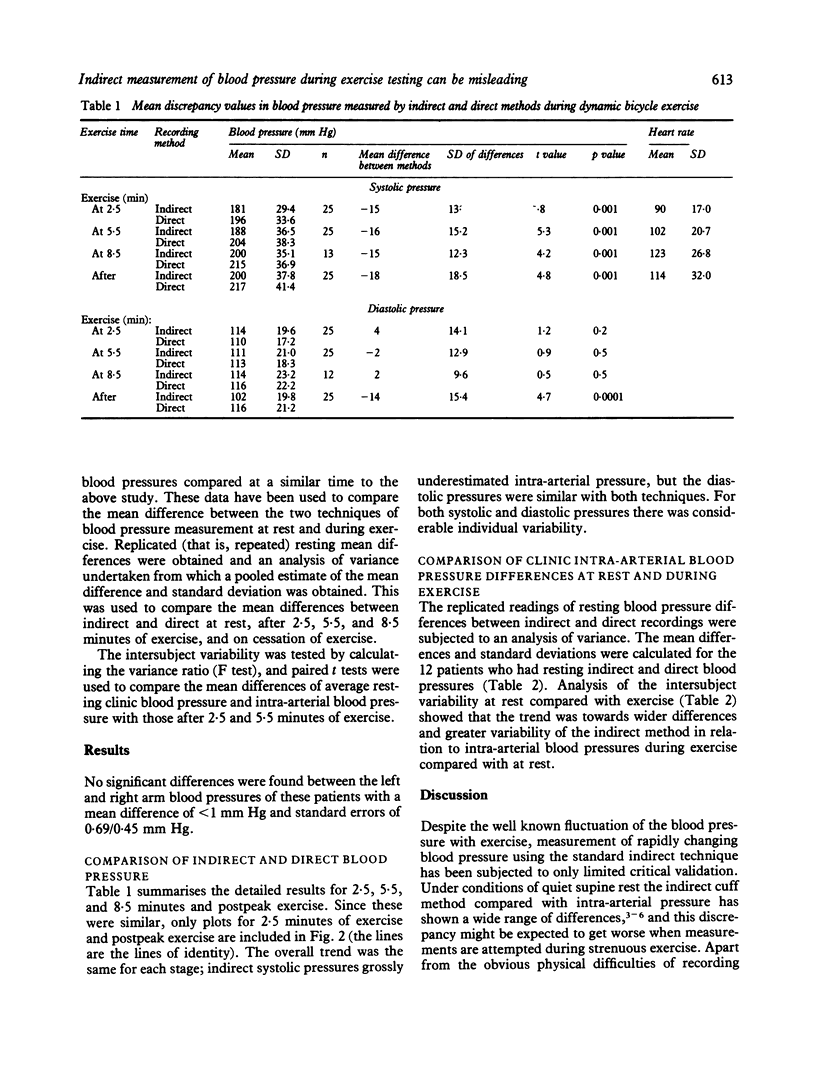
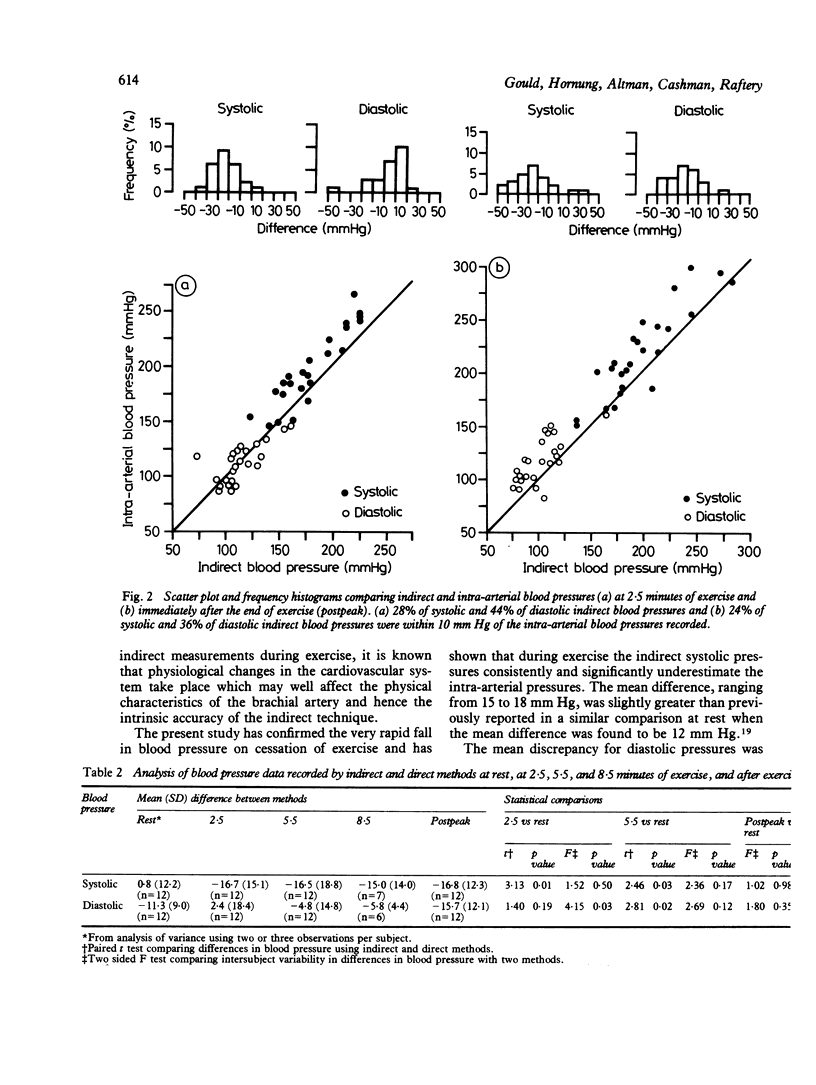
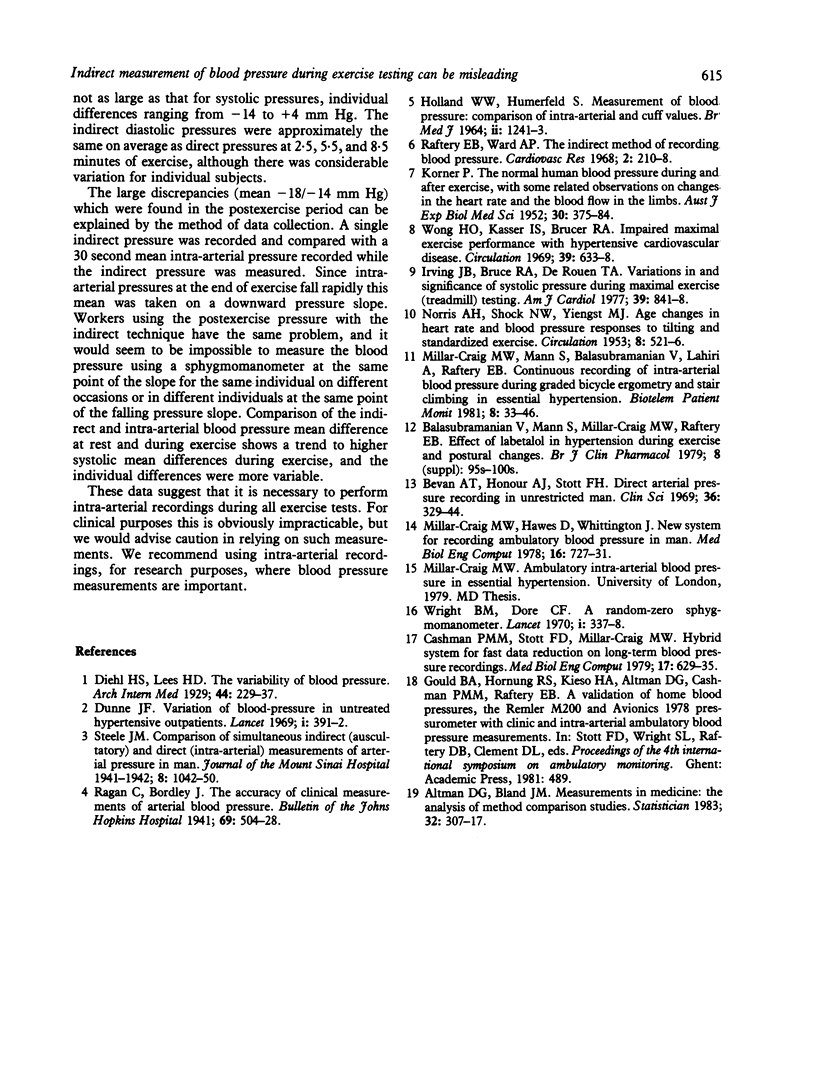
Selected References
These references are in PubMed. This may not be the complete list of references from this article.
- Bevan A. T., Honour A. J., Stott F. H. Direct arterial pressure recording in unrestricted man. Clin Sci. 1969 Apr;36(2):329–344. [PubMed] [Google Scholar]
- Cashman P. M., Stott F. D., Craig M. W. Hybrid system for fast data reduction of long-term blood-pressure recordings. Med Biol Eng Comput. 1979 Sep;17(5):629–635. doi: 10.1007/BF02440908. [DOI] [PubMed] [Google Scholar]
- Dunne J. F. Variation of blood-pressure in untreated hypertensive outpatients. Lancet. 1969 Feb 22;1(7591):391–392. doi: 10.1016/s0140-6736(69)91356-7. [DOI] [PubMed] [Google Scholar]
- HOLLAND W. W., HUMERFELT S. MEASUREMENT OF BLOOD-PRESSURE: COMPARISON OF INTRA-ARTERIAL AND CUFF VALUES. Br Med J. 1964 Nov 14;2(5419):1241–1243. doi: 10.1136/bmj.2.5419.1241. [DOI] [PMC free article] [PubMed] [Google Scholar]
- Irving J. B., Bruce R. A., DeRouen T. A. Variations in and significance of systolic pressure during maximal exercise (treadmill) testing. Am J Cardiol. 1977 May 26;39(6):841–848. doi: 10.1016/s0002-9149(77)80037-4. [DOI] [PubMed] [Google Scholar]
- KORNER P. I. The normal human blood pressure during and after exercise, with some related observations on changes in the heart rate and the blood flow in the limbs. Aust J Exp Biol Med Sci. 1952 Oct;30(5):375–384. doi: 10.1038/icb.1952.36. [DOI] [PubMed] [Google Scholar]
- Millar-Craig M. W., Hawes D., Whittington J. New system for recording ambulatory blood pressure in man. Med Biol Eng Comput. 1978 Nov;16(6):727–731. doi: 10.1007/BF02442453. [DOI] [PubMed] [Google Scholar]
- Millar-Craig M. W., Mann S., Balasubramanian V., Lahiri A., Raftery E. B. Continuous recording of intra-arterial blood pressure during graded bicycle ergometry and stair climbing in essential hypertension. Biotelem Patient Monit. 1981;8(1-2):33–46. [PubMed] [Google Scholar]
- NORRIS A. H., SHOCK N. W., YIENGST M. J. Age changes in heart rate and blood pressure responses to tilting and standardized exercise. Circulation. 1953 Oct;8(4):521–526. doi: 10.1161/01.cir.8.4.521. [DOI] [PubMed] [Google Scholar]
- Raftery E. B., Ward A. P. The indirect method of recording blood pressure. Cardiovasc Res. 1968 Apr;2(2):210–218. doi: 10.1093/cvr/2.2.210. [DOI] [PubMed] [Google Scholar]
- Wong H. O., Kasser I. S., Bruce R. A. Impaired maximal exercise performance with hypertensive cardiovascular disease. Circulation. 1969 May;39(5):633–638. doi: 10.1161/01.cir.39.5.633. [DOI] [PubMed] [Google Scholar]
- Wright B. M., Dore C. F. A random-zero sphygmomanometer. Lancet. 1970 Feb 14;1(7642):337–338. doi: 10.1016/s0140-6736(70)90709-9. [DOI] [PubMed] [Google Scholar]


